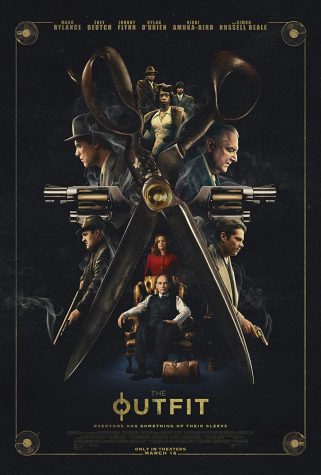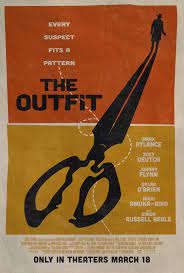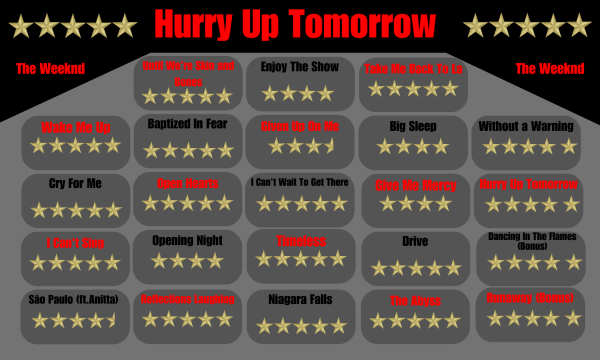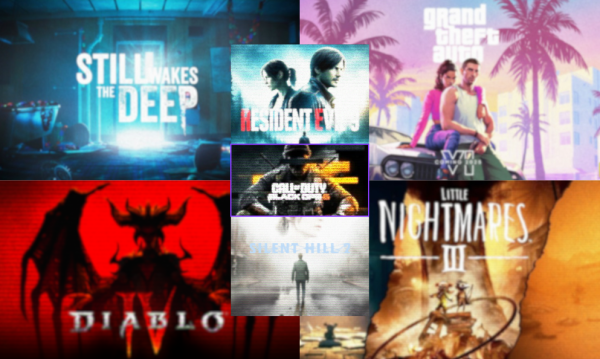THE OUTFIT: AMBIGUITY, TIME FRAMES, AND DIALOGUE
The Outfit:
The Outfit is not my typical viewing fare. If it wasn’t for the fact that the trailer played before Cyrano, I would not have heard of it. As luck would have it, I did see the trailer and it intrigued me enough that, six months later, I wondered: “Did that movie end up being good?”
Thus, I decided to watch it.
While The Outfit takes place over the course of a few days, the bulk of the movie takes place during one night. All of the movie is set in the same location: the Chicago- based tailor shop of Leonard Burling (Mark Rylance). Burling’s shop is unusual in terms of its clientele, as the Boyle mob are his best customers, and they store money and information in a drop box in the store. Complicating matters further is Burling’s receptionist and assistant, Mabel Shaun (Zoey Deutch), who has a history with mob violence and Richie Boyle (Dylan O’Brien)- the son of mob leader Rob Boyle (Simon Russell Beale). On one fateful night, Boyle’s enforcer, Francis (Johnny Flynn), shows up with a seriously injured Richie, who has sustained a gunshot wound after a violent confrontation with a rival family, the LaFontaines- headed by Violet LaFontaine (Nikki Amuka-Bird). When Mabel returns to the shop while the gang is there, Burling realizes he must keep his wits about him to survive the night.

The compressed time frame of the narrative is integral to its success. Its under two-hour run time means that both stakes and fallout have to be established quickly, and by having the story take place over the course of eight to twelve hours, this feeling of intensity is heightened. The audience genuinely feels as if they have been with the characters for the duration of the story. It’s effective not only for emotional draw, but also for investment in the characters. The whole movie serves as a warning about how unexpressed tensions can come to a violent head.
Ideally, to fully capitalize on this effect, the movie would have cut out the scenes that took place before this particular night. They aren’t necessary to the bulk of the movie, and the information gotten from these scenes can still easily be conveyed through character interactions and the implications of the dialogue.
Relationships especially could have been hinted at with express scenes. The way characters share space, or don’t, the way they look at each other or judge one another all betray connection. Spoiler for this line- So while having a scene of Richie and Mabel tells the audience that they’re a couple, shared glances, and familiarity through discussion would have shown the same thing- Spoiler ends.
The dialogue itself is both the saving grace and pitfall of the story. While it is by and large well-written, with nearly all the main cast having intense monologues to deliver, there are moments where it becomes hard to take seriously.

Part of this is slang. The Outfit is set in the 1950s, so there are vocabulary differences between the characters and the audience. For the most part, the outdated slang mixed with the heightened Chicago accents of the characters makes an immersive experience. However, there are moments when repetition of jargon leads to it feeling strained. It’s like saying the same word over and over until it doesn’t feel real anymore.
Most notably, this happens when characters refer to ‘marbles’ which are bullets. The first few times this occurs, it feels relevant, and makes the audience catch up with the characters rather than being explicitly told. But this ceases to work when Francis and Richie have an argument about both Richie’s current injury, and a past gunshot wound that Francis got protecting Richie’s father. Instead of sounding like a legitimate fight that has been bubbling to the surface slowly, it quickly devolves into two grown men shouting “Marbles!” while using circular logic.
Now, to some extent, I’m sure this is intentional. The story has no qualms about presenting Francis and Richie as power-hungry and out of their depth. They are directly referred to as being ‘little boys,’ but this is the way the script depicts them. This argument exemplifies their inherent personality problems, but it never takes it further. Francis and Richie don’t dig to the core of their violent tendencies, nor the way that they are competitors, nor the unfair nature of Richie inheriting a mob that Francis has been more integral in the sustainment of. Maybe this is the intended takeaway, and the audience sees that, even at their most vulnerable, they are detached. However, with a lack of direction for their emotions, and an unclear root of the problem, the audience has trouble pulling support for them. And in a story that seems to try to blur the line between ‘good’ and ‘evil’, the audience needs to form support for characters they would probably not like outside of the story.
Ambiguity is necessary, but often undermined by the dialogue. There are conversations that go on too long, and monologues that reveal too much. Rather than allowing the audience to question all the characters, the movie takes a definitive side and positions Burling as ‘right’. Or if not ‘right’ then ‘better’. Ideally, the movie would challenge the audience to take sides off of what they see in the movie, making them change their definition of what makes someone ‘good’ or ‘bad’.
In a story that is abundant in ulterior motives, barely concealed violence, ever-changing loyalties, and hidden pasts, a lack of easy dichotomy creates intrigue and impact. The actions of the characters are plain, but the reasoning behind these choices is murky. It creates an unsettling, pervasive anxiety about the capabilities of the players, and doesn’t give the audience a clear point of view character to cling to. It removes the safety net of having an unquestionably righteous character, and forces the audience to find their favorite as the story progresses, continually warping their perception of what is happening on the screen.
The ending voiceover effectively removes any of the grayness that the rest of the story has created, reducing The Outfit from an incisive look at goodness, relationships, and unintended consequences to the story of caricatures, acting out their pre-scripted parts.
7/10 may argue about ‘marbles’ again
Further Breakdown:
Writing Quality: 7/10 Enjoyability: 8/10
Pace: 7/10 Visual elements: 9/10
Plot development: 6.5/10 Insightfulness: 7/10
Characters: 7/10





